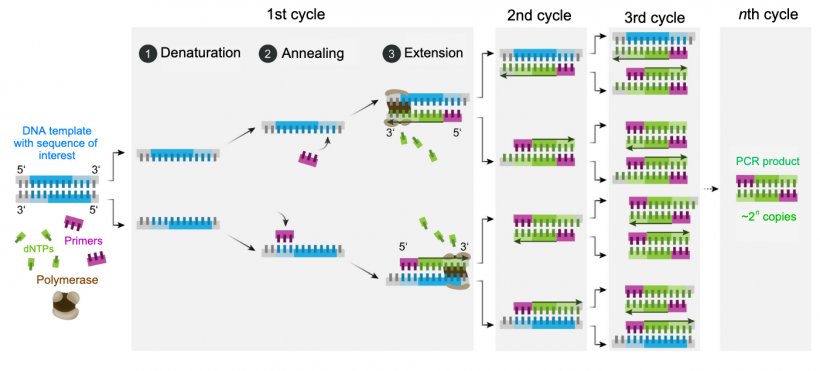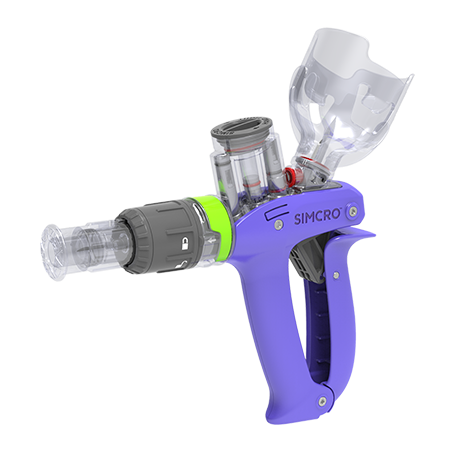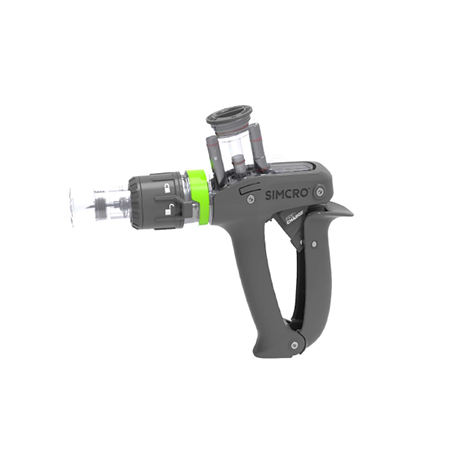The use of polymerase chain reaction (PCR) is one of the most common diagnostic tools used today in swine production medicine. It is used not only for diagnostic purposes but also as means to improve biosecurity through surveillance and disease monitoring. As such, it is critical to understand the advantages and disadvantages of such technology when interpreting results. It is also important to remember that although the same technology is being used for different pathogens, there should be differences in how these results are interpreted.
Assay information
The PCR assay is designed for the detection of genetic material (DNA or RNA) of bacteria or viruses. The process begins with the extraction of the DNA or RNA from the sample which is then placed through thermal cycles of amplification. If the target material is RNA, the first step will be the convert the RNA into DNA (which technically is referred to as cDNA). The thermal cycles are intended to create a 3-step process of 1) denaturation, 2) annealing, and 3) extension which results in the duplication of the DNA material present in the sample. So, for each cycle (1 Ct), assuming 100% efficiency there will be two times the DNA present. The goal will then be to continue the amplification process until there is sufficient DNA detected for the sample to test positive or for up to 30-40 cycles depending on the design of the specific assay used.


The extraction process is a critical step of the PCR assay as it impacts the quantity and quality of the genetic material in the sample tested. It is critical to use the proper extraction process for the sample type that is being tested (serum, oral fluids, tissue, etc.). Step 2 of the amplification process (annealing process) requires the use of primers which are short pieces of DNA sequence that have been specifically designed to only attach and help replicate the specific genetic sequence of the targeted pathogen of concern. For pathogens that continuously evolve genetically (such as with PRRS virus), these primers must be updated periodically to ensure new strains are still detected.
The assay cycle cutoff (usually around 30-40) is established recognizing that if the process of amplification continues, eventually the assay will turn positive simply due to spontaneous annealing and extension that will start occurring. This suggests that weak positive results, high Ct values close to cut off, need special consideration when interpreting results especially at the end of an outbreak.
There are two different PCR assay uses in swine medicine. The traditional gel-based PCR and the more modern real-time PCR. Both assays work the same, relying on the amplification of the DNA or RNA. The difference is that the gel-based assay is “read” only once at the end of the assay whereas with the real-time PCR the assay results are being “read” after each cycle. The advantage of the real-time PCR is that it allows for quantitative/semiquantitative results.
Pooling of samples for testing
PCR assays have great ability to detect small amounts of genetic material in samples (analytical sensitivity) due to its process of amplification of genetic material in the sample. This provides the opportunity to evaluate multiple samples with a single assay (pooling). It is important to remember that pooling, by definition, will dilute the sample evaluated. This should not be a problem when the expected concentration of a particular pathogen is high (especially in early outbreak of the disease). Pooling can be an issue when the pathogen concentration in a positive sample is low such as at the end of a disease outbreak or on a sample type where it is already expected to have been diluted (oral fluids).









